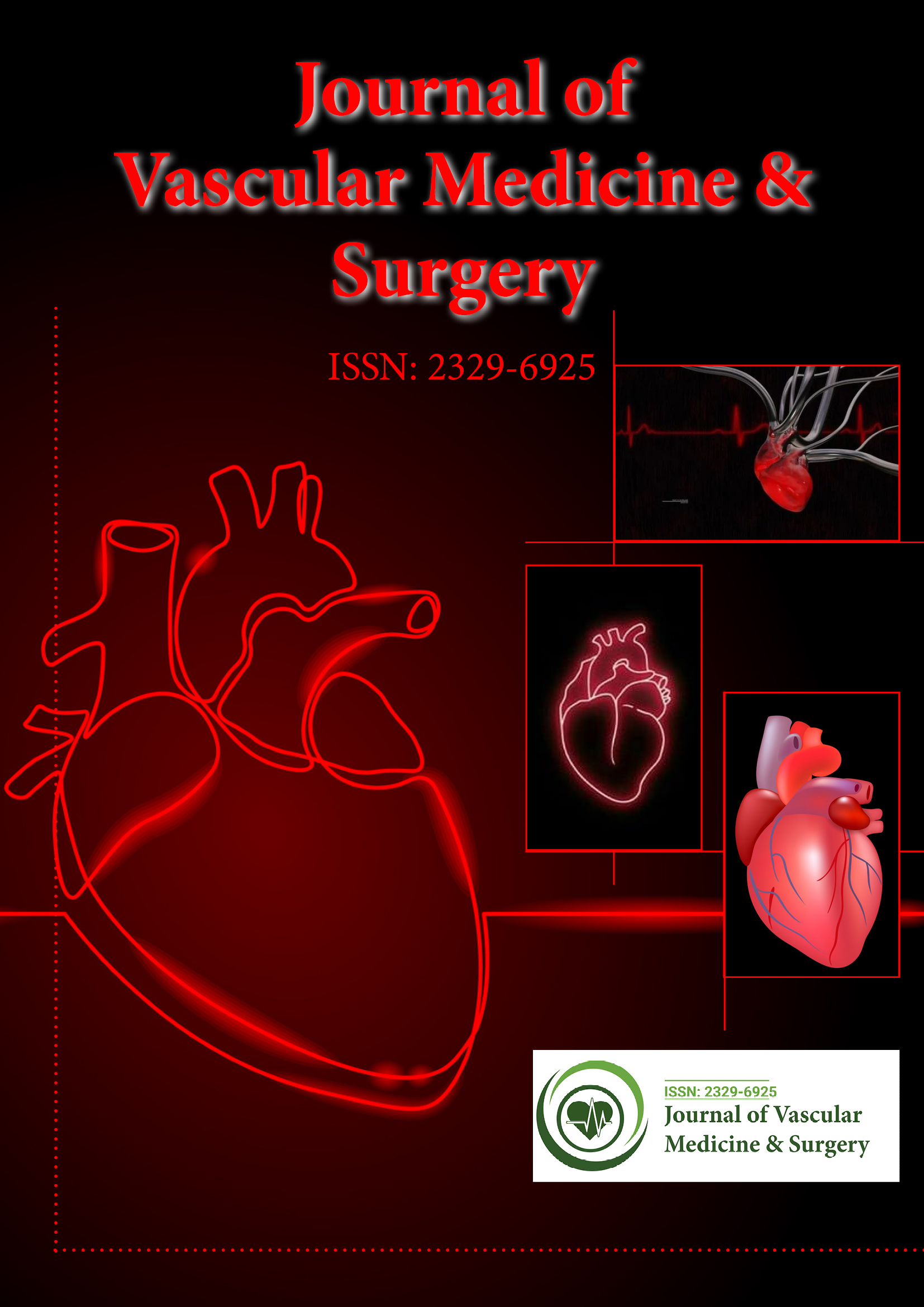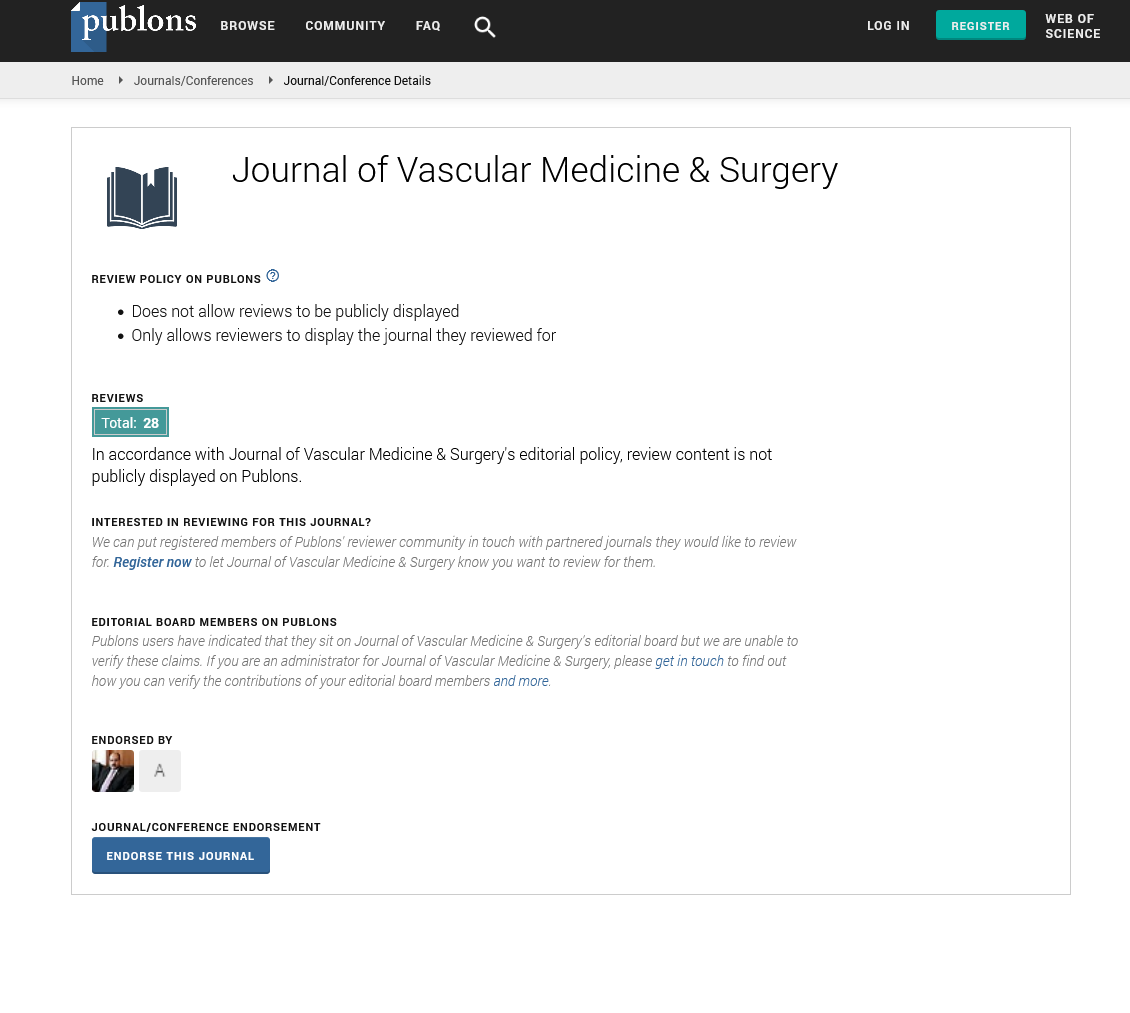Indexed In
- Open J Gate
- Academic Keys
- RefSeek
- Hamdard University
- EBSCO A-Z
- OCLC- WorldCat
- Publons
- Euro Pub
- Google Scholar
- SHERPA ROMEO
Useful Links
Share This Page
Journal Flyer

Open Access Journals
- Agri and Aquaculture
- Biochemistry
- Bioinformatics & Systems Biology
- Business & Management
- Chemistry
- Clinical Sciences
- Engineering
- Food & Nutrition
- General Science
- Genetics & Molecular Biology
- Immunology & Microbiology
- Medical Sciences
- Neuroscience & Psychology
- Nursing & Health Care
- Pharmaceutical Sciences
Commentary Article - (2023) Volume 0, Issue 0
Assessment of Heart Rate Variability and its Types
Lindner Schmutzhard*Received: 04-Feb-2023, Manuscript No. JVMS-23-20215;; Editor assigned: 06-Feb-2023, Pre QC No. JVMS-23-20215 (PQ); Reviewed: 20-Feb-2023, QC No. JVMS-23-20215; Revised: 27-Feb-2023, Manuscript No. JVMS-23-20215 (R); Published: 09-Mar-2023, DOI: 10.35248/2329-6925.23.S14.505
Description
The heart rate (or pulse rate) is the frequency of the heart and lungs as measured by the number of myocardial contractions per minute (beats per minute, or bpm). The heart rate is modulated by a wide range of variables including genetic factors, physical conditioning, anxiety or psychological functioning, nutrition, drugs, hormonal factors, environment, and disease/illness, as well as the interaction between these factors. It is generally equivalent to close the pulse measured at any other point on the body.
According to the American Heart Association, the resting metabolic adult human heart rate is 25-75 beats per minute. Tachycardia is a fast heart rate that is greater than 100 beats per minute at rest. Bradycardia is a low heart rate, described as below 60 bpm at rest. When a person sleeps, a heartbeat of 40-50 beats per minute it is common and considered as normal. Arrhythmia is a condition in which the heart does not beat in a regular pattern. Heart rate abnormalities can sometimes indicate disorder.
The number of times the heart beats in one minute is referred to as the heart rate. The heart is a muscular organ placed in the middle of the body. When it beats, the heart circulates blood containing oxygen and nutrients throughout the body and generates waste products. A normal heartbeat provides the body with the appropriate amount of blood at the appropriate rate depending on the body is performing at that time.
For example, being shocked or affected leads to the production of adrenaline, a hormone that causes the heart to beat faster. This stimulates the body to expend more oxygen and energy in order to move or overcome significant hazard. The pulse is frequently confused with the heartbeat, but it specifically refers to many times per minute the arteries expand and response to the heart's pumping action. The pulse rate is directly proportionate to the heart rate because heart symptoms increase the blood pressure in the arteries, resulting in a noticeable heartbeat. One’s pulse provides a direct measure individual's heart rate.
Types of pulse rate
Normal pulse rate: The number of times the heart beats per minute is known as the pulse rate, or also known as the heart rate. A regular heart rate at rest should range from 60 to 100 beats per minute, but this can vary from minute to minute. The age and general health can also influence the pulse rate; a 'normal' pulse rate can be different for every individual.
Fast pulse rate: the fast heart rate should be less than 100 beats per minute. A rapid heart rate is also known as tachycardia, it can be caused by an array of medical conditions. When individual exercise or the body is facing an infection, it is normal for the heart rate to increase.
Slow pulse rate: A normal heart rate should be less than 60 beats per minute is considered as slow pulse rate (bradycardia). A slower pulse rate can be normal for some people, which include athletes, fit and healthy young adults, or those taking medications like beta-blockers. For example, individual exercises frequently may have a resting heart rate of 60 beats per minute or less heartbeat.
Citation: Schmutzhard L (2023) Assessment of Heart Rate Variability and its Types. J Vasc Surg. S14:505.
Copyright: © 2023 Schmutzhard L. This is an open access article distributed under the terms of the Creative Commons Attribution License, which permits unrestricted use, distribution, and reproduction in any medium, provided the original author and source are credited.

